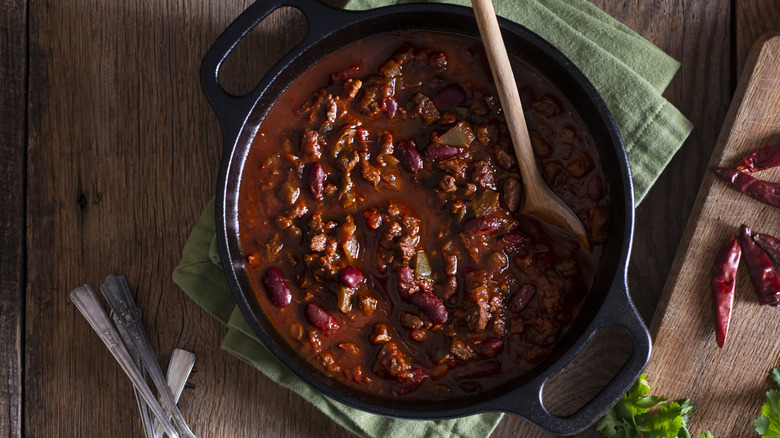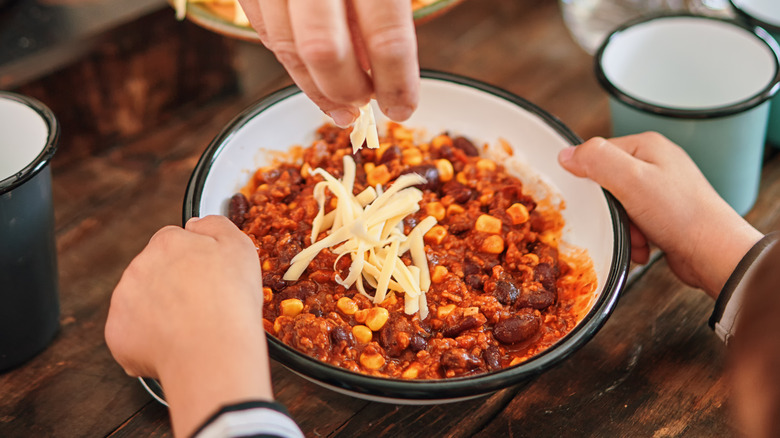Let Your Chili Cool Down Overnight For A Huge Flavor Upgrade
Making chili is a highly individualized undertaking. Everyone swears they have the best method or the secret ingredient that will take chili over the top. But the real way to make any chili taste better is time. Some dishes are just better the next day, and chili is among them. The flavors mellow out, and the meat and beans become more tender. Any excess liquid smooths out into a cohesive sauce, and you're left with a silky feel. But why?
While several chemical reactions are likely at work here, the main reason has to do with all of the components that make up a chili. Meat, beans, tomatoes, aromatics like onion and garlic, plus all those spices, need time to merge in the fridge. While an hour or so of cooking can permeate soft tomatoes and onions, the meat and beans take longer to take on the flavors. An overnight chill gives the ingredients time to round out, tasting less like themselves and more like a cohesive dish.
Scientific reasons chili is actually better the next day
The chemical changes that occur while a pot of chili cools slowly in the oven are what also make it taste better the next day. If you include meat, resting your dish will improve its texture. You want chili to rest for the same reason you want a steak to rest. Once it begins to cool, the fibers expand, and the juices redistribute. Beans, too, will improve with a chill. As they heat up, they release starch into the liquid of the chili, contributing to the smooth texture. When they cool, they will go through a process called retrogradation, which will essentially lock liquid inside as the starch gelates. With all this contracting and relaxing, more juices will enter the meat and beans, allowing them to absorb more flavor.
Onions, garlic, peppers, and other aromatic vegetables will also take on flavor components from the chili, softening and increasing in flavor. You'll notice as chili ages, everything begins to break down further as it softens in the acidic tomato-sauce-based environment. You are essentially marinating everything — meat, beans, and vegetables — in spicy tomato sauce.
How to safely cool chili
Now that you've determined that your pot of steaming hot chili needs a night in the fridge, you have to cool it correctly. One of the biggest mistakes people make while cooling food is leaving it out for several hours on the counter. If you don't cool it right, food can spend too much time in what's called the "danger zone." This is a wide temperature range from 40-140 degrees Fahrenheit, and you're going to need to get through it in less than two hours to satisfy the Food and Drug Administration (FDA). However, you can't just put a huge Dutch oven in the fridge. Instead, split the chili up into several shallow containers and allow them to cool slightly. If you cool those containers in an ice bath, you'll be in and out of the danger zone even faster. Be sure to pop them in the fridge before the two-hour window is up.
When you're ready to eat your chili, one of the most dangerous things you can do with leftovers is to reheat them multiple times. Take out only what you intend to eat and return the extra to the fridge for another day. However, make sure to use it all up or freeze it by the fourth day, according to FDA guidance.


